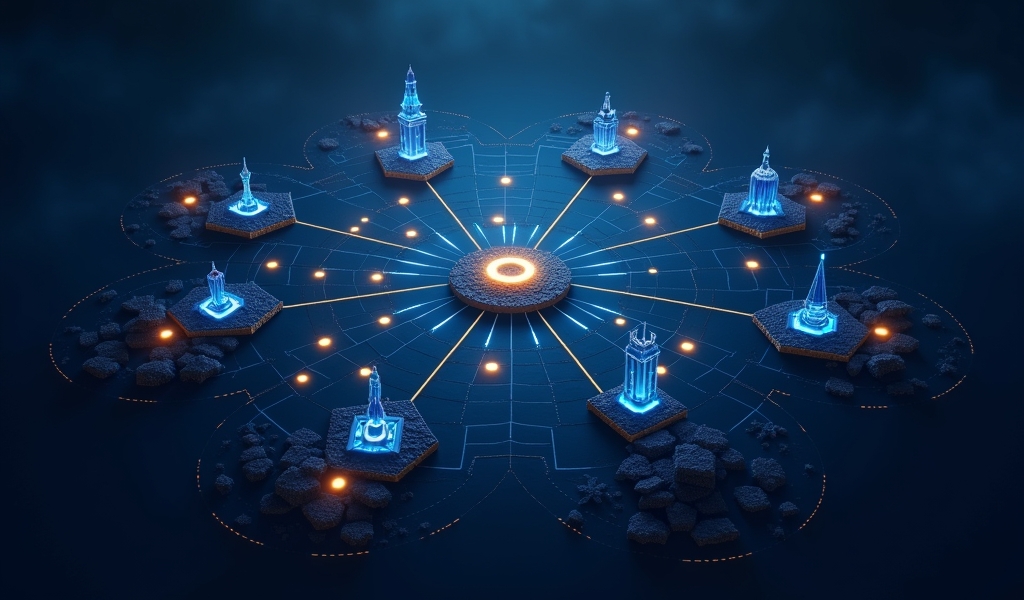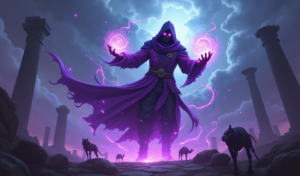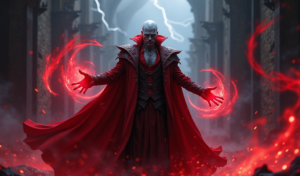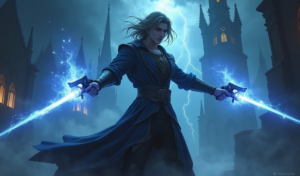Overview
To improve macro play in League of Legends, players must master five strategic elements: map awareness, objective control, wave management, team coordination, and vision control. These fundamental skills elevate gameplay beyond mechanical proficiency by focusing on strategic decision-making that impacts the entire map, creating advantages that consistently translate to victories regardless of individual lane performance.
Table of Contents
Want to improve macro play in League of Legends? You’re not alone. While mechanical skills might win lane, it’s strategic macro play that wins games. The difference between a good player and a great one often comes down to understanding the bigger picture of how matches unfold beyond individual lanes.
Macro play encompasses all the strategic decisions that impact the entire map – from objective control to wave management. It’s what separates players who climb consistently from those who remain stuck despite solid mechanics.
In this guide, we’ll explore five proven strategies to elevate your macro game and help you dominate the Summoner’s Rift with smarter decision-making. Whether you’re a Silver player looking to reach Gold or a Diamond player aiming for Master, these concepts will give you the strategic edge you need.
Understanding Macro Play: The Strategic Foundation
Before diving into specific strategies, let’s clarify what macro play actually means. In essence, macro play refers to your ability to make game-winning decisions based on the bigger picture rather than just your immediate surroundings.
Good macro players understand win conditions, recognize power spikes, and make decisions that put their team in advantageous positions. They know when to trade objectives, when to group, and when to split push.
Poor macro play often manifests as teams securing kills but failing to convert those advantages into objectives. You might see teams chase enemies across the map while towers fall uncontested, or squads grouping mid with no purpose while side lanes push against them.
To improve macro play, you must develop a strategic mindset that constantly evaluates the state of the game. This means understanding not just what’s happening now, but predicting what will happen two or three steps ahead.
Let’s explore the five key strategies that will transform your macro game and help you climb the ranked ladder.
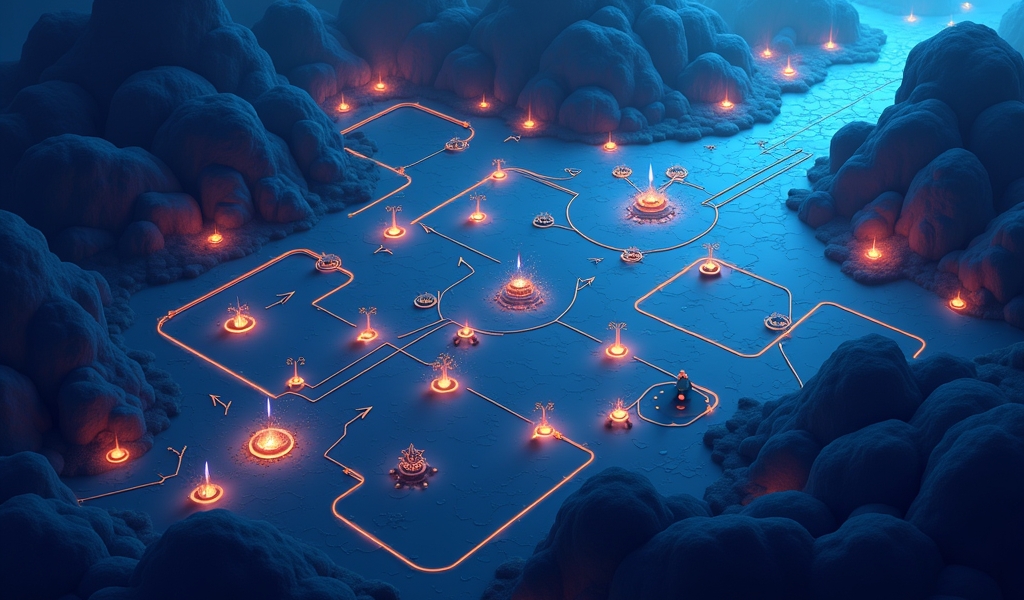
Strategy #1: Elevate Your Map Awareness
The foundation of strong macro play begins with exceptional map awareness. You simply cannot make informed strategic decisions if you don’t know what’s happening across Summoner’s Rift.
Start by developing the habit of checking your minimap every 3-5 seconds. This might feel awkward at first, but with practice, it becomes second nature. Set a timer during practice games if needed to build this critical habit.
Map awareness isn’t just about seeing enemy positions. It’s about processing that information to make predictions and strategic calls. Here’s how to level up this skill:
- Track enemy jungle movements based on camp timers and recent sightings
- Monitor lane states to predict where enemies might rotate next
- Watch for missing enemies and consider what objective they might be targeting
- Note which teammates have ultimate abilities ready for potential plays
Advanced players can take this further by mentally tracking summoner spell cooldowns and ultimate timings of key enemies. This information becomes invaluable when deciding whether to contest objectives or force engagements.
According to Riot Games’ own statistics, players who maintain better map awareness consistently achieve higher win rates across all ranks. This fundamental skill serves as the bedrock upon which all other macro decisions are built.
Strategy #2: Master Objective Control and Timing
League of Legends is ultimately an objective-based game, not a kill-based one. The nexus falls through strategic objective control, not through a high KDA. To improve macro play substantially, you must master the art of objective control.
Objectives in League follow predictable spawn timers, creating windows of opportunity that smart teams exploit. Dragons spawn every 5 minutes, Rift Herald appears at 8 minutes, and Baron Nashor spawns at 20 minutes.
Effective objective control requires preparation 30-45 seconds before the objective spawns. This preparation includes:
- Setting up vision control around the objective
- Managing nearby waves to create pressure or deny enemy access
- Positioning your team advantageously
- Tracking enemy cooldowns to identify windows of opportunity
Understanding objective priorities is equally crucial. Early dragons might be worth sacrificing for Herald if you can use it to break open the first tower and unlock the map. Similarly, trading a Cloud Drake for multiple towers can be the right macro call.
The best jungle players excel at planning their pathing around objective timers. They ensure they’re on the correct side of the map when key objectives spawn and coordinate with laners to create advantageous setups.
Remember that smart objective trades often win games. If the enemy team commits five members to Dragon, a coordinated push on the opposite side of the map might net you multiple towers or even an inhibitor – a trade that favors your team in the long run.
Strategy #3: Perfect Wave Management for Strategic Advantage
Wave management might seem like a laning concept, but it’s actually a critical macro tool throughout the game. Understanding how to manipulate minion waves creates map pressure, denies resources, and forces enemies to make difficult decisions.
To improve macro play, you must master these wave management concepts:
- Slow pushing – building a large wave that creates pressure even without your presence
- Fast pushing – quickly shoving a wave to reset it or free yourself to roam
- Freezing – holding a wave near your tower to deny resources and create gank opportunities
- Bouncing – pushing a wave to make it return toward your side of the map
The strategic application of these techniques changes as the game progresses. During the laning phase, wave management helps you gain individual advantages. In the mid-game, it creates pressure points that pull enemies away from objectives.
Late-game wave management often means setting up slow pushes in side lanes before grouping for objectives. This creates “lose-lose” scenarios for opponents – either they send someone to address the wave (making objectives easier to contest) or they lose structures to minions.
Top professional teams demonstrate this masterfully. According to eSports analysts, elite teams maintain nearly perfect wave states across all three lanes, creating pressure that gradually constricts their opponents’ options until victory becomes inevitable.
Remember that minions deal significant damage to structures throughout the game. A properly managed wave can take towers without champion assistance, creating free objectives through pure macro play.
Strategy #4: Enhance Team Coordination and Communication
Even the most brilliant macro strategy fails without effective team coordination. To truly improve macro play, you must develop clear, concise communication with your teammates about strategic intentions.
In solo queue, this means using pings effectively to convey your plans. Rather than spamming a single ping type in frustration, use combinations of pings to tell a strategic story:
- “On my way” + “Assist” pings indicate you want to make a play together
- “Danger” + “Enemy Missing” pings warn teammates of potential ganks
- Objective timer pings + “On my way” signal your intention to contest
For those playing with premade teams, develop concise callouts for common scenarios. Avoid information overload by focusing on actionable intelligence: “Mid flash down, gank in 20 seconds” is more useful than lengthy explanations.
The most critical coordination concept is understanding role responsibilities in macro play. Typically:
- Supports and junglers should lead early vision control and objective setups
- Mid laners coordinate roams and skirmishes with the jungler
- Top laners manage side lane pressure and teleport plays
- ADCs position for maximum safe damage during objective contests
Professional LoL coaching often focuses heavily on team coordination elements. The best teams don’t need extensive communication because they share a common strategic understanding of the game state.
By improving your strategic communication, you help your entire team operate with the same macro vision, dramatically increasing your chances of victory.

Strategy #5: Dominate Through Superior Vision Control
Vision control is often called “the invisible carry” for good reason. To improve macro play substantially, you must master the strategic placement and denial of vision across the map.
Effective vision timing means placing wards that provide actionable information when you need it most. This includes:
- Deep wards in the enemy jungle to track the jungler’s movements
- River and quadrant brushes to spot rotations between lanes
- Objective setup wards placed 45-60 seconds before spawn times
- Defensive wards when behind to prevent picks and enable safe farming
Equally important is vision denial through control wards and sweepers. Clearing enemy vision creates “dark areas” on the map where your team can move undetected, enabling surprise plays and ambushes.
Every player, not just supports, should contribute to vision control. A good rule of thumb is to use at least one control ward per back after the laning phase, positioning them to support your team’s next objective play.
According to data from high-elo matches compiled by LoLalytics, there’s a direct correlation between vision score and win rate across all roles. Players who consistently outward their opponents win more games, regardless of mechanical skill.
Think of vision as buying information that enables better macro decisions. Without it, you’re essentially making strategic choices blindfolded.
Putting It All Together: Your Path to Macro Mastery
To truly improve macro play, you need to integrate all five strategies into your gameplay. This doesn’t happen overnight – it requires deliberate practice and conscious application of these principles.
Start by focusing on one aspect at a time. Perhaps begin with map awareness, setting a personal goal to check your minimap more frequently. Once that becomes habitual, move on to objective timing, then wave management, and so on.
Review your own replays with a critical eye for macro decisions. Ask yourself: “What objective should I have prioritized here?” or “How could better wave management have created an advantage in this situation?”
Consider investing in League of Legends coaching focused specifically on macro improvement. An experienced coach can identify macro weaknesses that may not be obvious to you and provide personalized guidance to address them.
Remember that macro play is a continuous learning journey. Even professional players constantly refine their strategic understanding as the meta evolves. Be patient with yourself, celebrate improvements, and keep focusing on the big picture.
By consistently applying these five proven strategies – map awareness, objective control, wave management, team coordination, and vision control – you’ll develop the macro understanding needed to dominate Summoner’s Rift and climb to new heights.
The greatest satisfaction in League doesn’t come from flashy outplays, but from outthinking your opponents through superior strategy. Master these macro concepts, and you’ll find yourself winning more games while understanding exactly why you’re winning them.
Frequently Asked Questions
What is macro play in League of Legends?
Macro play refers to the strategic decision-making that affects the entire map in League of Legends, including objective control, wave management, rotations, and vision control. It’s about understanding the bigger picture beyond individual lanes or mechanical skill.
How can I practice macro play in solo queue?
Focus on improving your map awareness, tracking objective timers, managing waves properly, and using pings to communicate your strategic intentions clearly. Reviewing your own replays with a focus on macro decisions is also extremely valuable for improvement.
Which role has the most macro influence in League?
Jungle and support roles typically have the most direct macro influence due to their map mobility and vision control responsibilities. However, all roles can significantly impact macro play through teleport usage, wave management, and coordinated rotations.
How long does it take to improve macro play?
Meaningful macro improvement typically takes several weeks of consistent, focused practice with deliberate attention to strategic concepts. Most players see noticeable results after 30-50 games of actively applying macro principles, though mastery is an ongoing journey.
Is macro more important than mechanics for climbing?
For most players, improving macro play offers more consistent climbing results than focusing solely on mechanics. Good macro decisions can compensate for mechanical shortcomings, allowing players to win through superior strategy even when they aren’t mechanically outplaying opponents.

